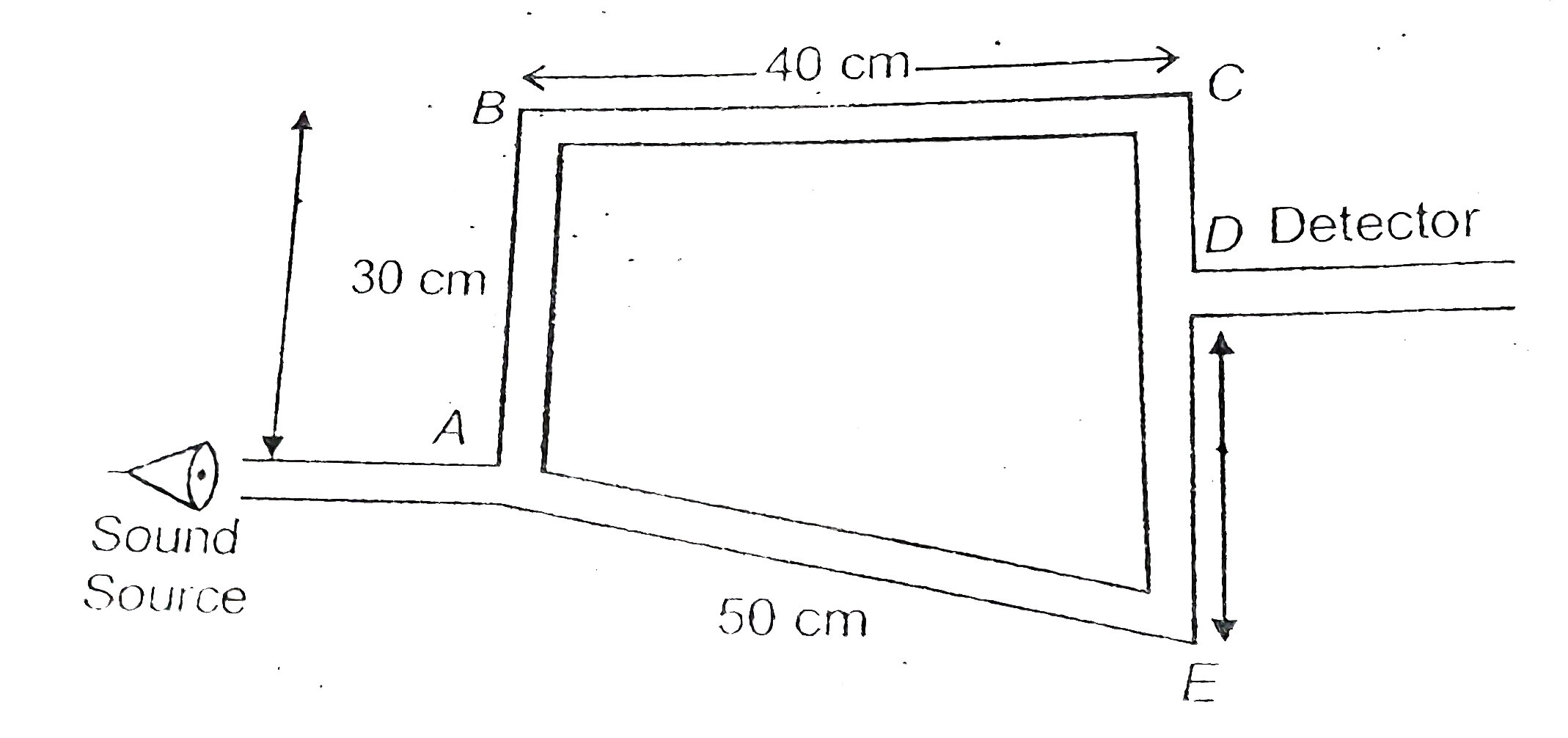Figure 7.75 shows a tube structure in which a sound signal is bent from one end and is received at the other end . The semicircular part has a radius of 20.0cm. The frequency of the sound source can be varied electronically between 1000and4000Hz. Find the frequencies at which maxima of intensity are detected. The speed of sound in air =340m/s.

The sound wave reaches detector bytwo paths simultaneously bystraight as well as semicircular track. 1he wave through the straight part travels a distance l1=2×20cm and the wave through thecurved parttravels a distance l2=π(20cm)=62.8cm before they meet again and travel to the receiver. The path difference between the two waves received is, therefore,
Δl=l2−l1=62.8cm−40cm
= 22.8 cm = 0.228 m
The wavelength ofeither wave is vn=340n . For constructive interference, ΔI=Nλ , where N is an integer.
0.228=N(340n)
n=N(3400.228)=N(1491.2)Hz
= n(1490)Hz
Thus, the frequencies within the specified range which cause maxima of intensityare 1490 Hz and 2980 Hz.
Topper's Solved these Questions
- BOOK - PHYSICS GALAXY - ASHISH ARORACHAPTER - WAVES EXERCISE - Practice Exercise 6.112videos
WAVES
- BOOK - PHYSICS GALAXY - ASHISH ARORACHAPTER - WAVES EXERCISE - Practice Exercise 6.211videos
WAVES
- BOOK - PHYSICS GALAXY - ASHISH ARORACHAPTER - WAVE OPTICSEXERCISE - Unsolved Numerical Problems28videos
WAVE OPTICS
- BOOK - PHYSICS GALAXY - ASHISH ARORACHAPTER - X-RAYSEXERCISE - Unsolved Numerica Problem for Preparation23videos
X-RAYS
Similar Questions
Figure shows a tube structure in which a sund signal is sent from one end and is received at the other end.The semicircular part has a radius of 20.0 cm. The frequency ohet sound source can be varied elertronically between 1000 and 4000 Hz. Find the frequencies at which maxima of intensity are detected. The speed of sound in air =3400ms^-1.
 View Solution
View SolutionFigure shows a tube structure in which a sound signal is sent from one end and is received at the other end. The semicircular part has a radius of 10.0 cm. The frequency of the sound source can be varied from 1 to 10 kHz. Find the frequencies at which the ear perceives maximum intensity. The speed of sound in air =342m/s
 View Solution
View Solution
Knowledge Check
- Question 1 - Select One
If pipe open at both the ends has an effective length of 0.5m, then the frequency of the note which is octave its fundamental frequency will be (Velocity of sound in air is 340m/s)
A170HzB340HzC510HzD680Hz
Figure 7.20 shows a tube structure in which signal is sent from one end and is received at the other end . The frequency of the sound source can be varied electronically between 2000→5000Hz. Find the frequencies at which maxima of intensity are detected . The speed of sound in air 340m/s.
 View Solution
View SolutionAn electronically driven loudspeaker is placed near the open end of a resonance column apparatus. The length of air column in the tube is 80 cm. The frequency of the loudspeaker can be varied between 20 Hz and 2 kHz. Find the frequencies at which the column will resonate. Speed of sound in air =320ms−1
View SolutionIn the shown figure ABCDE is a tube which is open at A and D. A soruce of sound A is placed in front of A. if frequency of the source can be varried from 2000 Hz to 4000 Hz. Find frequencies at which a detector placed in front of D receives a maxima of intensity.
(Given speed of sound =340m/s)
 View Solution
View SolutionA cylindrical metal tube has a length of 50 cm and is open at both ends. Find the frequencies between 1000 Hz and 2000 Hz at which the air column in the tube can resonate. Speed of sound in air is 340ms−1.
View SolutionFind the fundamental, first overtone and second overtone frequencies of an open organ pipe of length 20 cm. Speed of sound in air is 340ms−1.
View SolutionFigure shows a tube having sound source at one end and observe at other end. Source produces frequencies upto 10000Hz. Speed of sound is 400m/s. Find the frequencies at which person hears maximum intensity.
 View Solution
View SolutionA closed organ pipe can vibrate at a minimum frequency of 500 Hz. Find the length of the tube. Speed of sound in air =340ms−1.
View Solution
